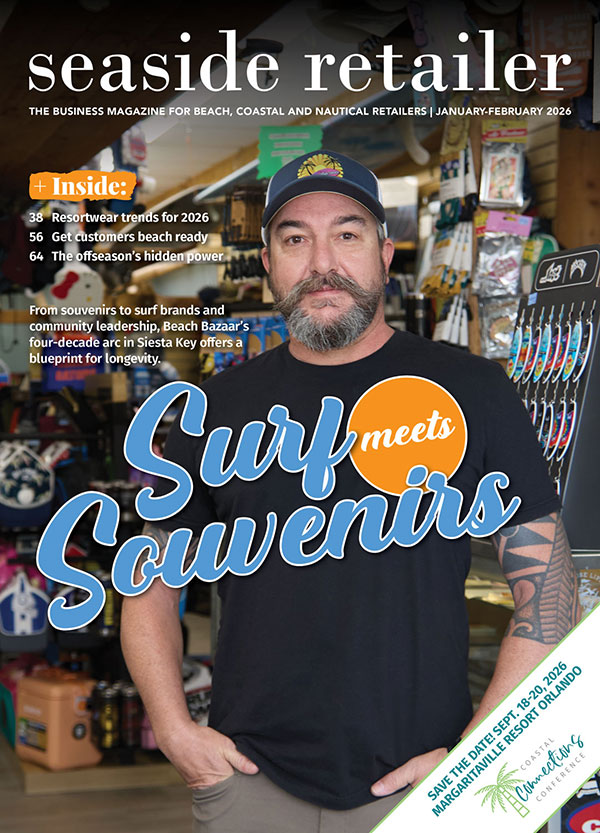
Retailing means selling in the right atmosphere — one that encourages customers to feel, smell, taste, hear and most of all, visualize what they can achieve if they buy the product being sold. Encouraging customers to touch a product stirs their imaginations as they figure out how it might fit into their lives.
Touching a piece of merchandise is a crucial first step to buying it. And while the pandemic has wreaked havoc with this strategy as people have become wary of touching surfaces, it’s still an instinctual behavior for customers to pick up items they are interested in.
As retailers, our role is to entice shoppers into falling in love with our merchandise. How then do we create this enticing visual and sense-filled atmosphere?
Let’s set the stage starting with visuals. After all, visuals comprise 80% of store atmospherics. Of all the numerous methods of encouraging customer movement through a store, color is one of the most effective and inexpensive. People are naturally drawn to things that are bright and colorful.
Color elicits an emotional response. Bright colors remind people of happy times, while more muted, soothing hues are conducive to mellow, relaxed moods. Research shows that women tend to buy by color whether it’s fashion or home accessories.
When shops sell down their inventory and are left with noncoordinating products, the most productive way to display them is by color group. Put warm and cool tones in separate collections. Then subcategorize within each tonal group. Warm tones will include reds, oranges and yellows; cool tones are the greens, blues and violets.
As retailers, our role is to entice shoppers into falling in love with our merchandise.
The second most important strategy in drawing people closer to merchandise is engaging them through storytelling.
Most stores carry a broad range of goods that can be confusing to customers. To simplify their shopping experience, group your merchandise in such a compelling way that people simply have to stop and look at your displays.
Grouping by theme means placing products that share the same narrative together. For example, in the case of fashion accessories, instead of placing all the earrings in one spot, all the necklaces in another and bracelets in yet another, combine all the jewelry items that share the same style, finish or design motif and display them as one group. Place a dolphin pendant alongside dolphin scarves and dolphin-themed earrings, bracelets and rings. This way a shopper will be enticed into purchasing coordinating pieces.
What about the rest of the senses like touch, smell and sound? Looking at contrasting textures creates a nearly irresistible urge to touch them. Add texture to your displays by placing something rough next to something smooth.
Subtle scents certainly have a place in your store. Scented candles exude fragrance even when not lit. Bath and body products do also. Ensure that there are no strong, lingering scents concentrated in one area as it could be too overpowering.
Finally, for the ears, play music that appeals to your target shoppers’ demographic. Layer that over the background noises every retailer loves — that of happy customers chattering away and the cash register ringing.

